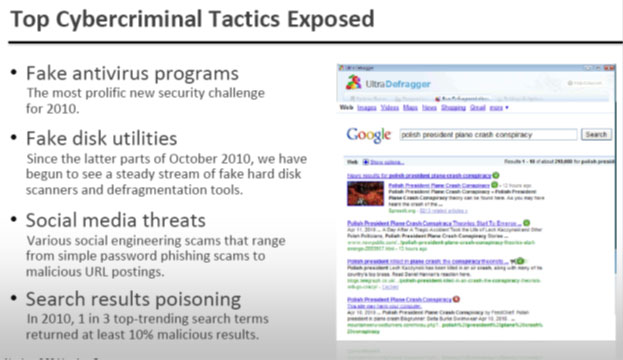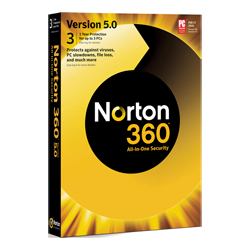Connected
and
Protected
�
Keeping
what�s
yours,
yours.
By
Michele
Thompson,
Norton
online
safety
advocate
ANZ
The
digital
world
is
now
very
much
engrained
in
our
lives
� in
the
office,
the
home
-
really
anywhere
we
go.
We
use
the
internet
for
a
variety
of
reasons,
shopping
and
banking,
downloading
music
and
movies,
gaming
or
just
keeping
in
touch
with
friends
on
social
networks.
The
way
we
work,
play,
shop,
and
communicate
has
undergone
a
transformation
unprecedented
in
its
scope
and
speed.
The
advancements
we�ve
seen
recently
have
profoundly
changed
life
for
the
individual
consumer
�
and
for
the
enterprises
serving
them.
In a
relatively
short
amount
of
time,
the
entire
online
world
is
touching
our
lives
in
very
different
ways
than
we
expected
just
a
few
short
years
ago.
Today
we�re
more
influenced
by
connectivity
and
more
dependent
on
digital
content
than
we
ever
thought
possible!
All
this
collaboration
and
shared
interaction
is
truly
a
great
opportunity.
However
the
nature
of
doing
so
opens
us
all
up
to a
variety
of
potential
security
risks
that
we
may
not
be
aware
of.
In
fact,
increased
connectivity
across
devices
means
new
ways
for
cybercriminals
to
target
you
online.
In
the
last
year,
Symantec
has
seen
an
increase
of
42
percent
in
mobile
vulnerabilities
alone.
According
to
the
recent
Norton
Mobile
Survey
42
percent
of
Aussies
have
fallen
victim
to
mobile
phone
loss
or
theft
and
only
41
percent
of
Australians
are
using
passwords
to
protect
their
mobiles.
As
we
make
more
financial
transactions
through
mobile
devices
cybercriminals
are
likely
to
develop
even
more
threats
targeting
smartphones
in
the
future.
We
need
to
be
protected
wherever
we
are
connected
and
simple
things
like
password
protection,
is
the
first
line
of
defence
when
it
comes
to
protecting
ourselves.
As
numerous
reports
have
shown
recently,
there
are
a
growing
number
of
individuals
using
applications
as
tools
to
extort
money,
spread
viruses
and
generally
cause
mayhem
for
the
regular
internet
user.
In
fact,
over
the
years
we
have
seen
the
motivation
for
cybercriminals
move
away
from
notoriety
to
financial
gain,
as
the
potential
to
steal
money
from
internet
users
increases.
Fame
vs
fortune
the
motivation
has
changed.
Cybercrime
has
come
a
long
way
from
individual
hackers
with
a
�Look
what
I
can
do�
attitude
to a
multi-million
dollar
industry
that
cost
more
than
$550
million
in
2009.
It�s
big
money,
last
year�s
Zeus
bust
police
arrested
cybercriminals
who
netted
$70
million
over
an
18-month
period
with
a
botnet
that
instigated
malicious
code
attacks
on
online
banking
and
trading
accounts.
Cybercrime
can
happen
to
anyone
and
it�s
already
happened
to
more
than
2/3
of
Australians
online.
Cybercriminals
don�t
care
who
you
are,
where
you
live
or
what
you
do.
If
you
have
private
information
online,
such
as a
credit
card,
bank
account,
e-mail
address
or
date
of
birth,
cybercriminals
consider
you
a
target.
So
how
much
are
you
worth
to a
cybercriminal?
Believe
it
or
not,
credit
card
data
can
be
bought
from
as
little
as
$0.07
to
as
much
as
$100
per
piece
on
the
underground
black
market.
To
put
it
all
in
perspective,
cybercrime
costs
Australians
$4.5
billion
($US3.9
billion)
which
is
enough
to
rebuild
the
Sydney
Opera
House
10
times
over
(according
to
the
Norton
Cybercrime
Report).
Breaking
this
down
into
what
it
would
cost
you
- it
would
take
a
victim
29
days
to
resolve
a
cybercrime
and
cost
them
an
average
of
$608
in
out-of-pocket
expenses
� in
addition
to
any
amount
of
money
that
was
stolen,
added
to
the
inconvenience.

The
notion
of
privacy
and
security
online
is
changing
and
it
is
no
longer
just
about
protecting
the
PC,
but
it
is
all
about
protecting
the
interactions
of
internet
users.
Protecting
identities
today
requires
consumers
to
make
smart
choices
and
safeguard
their
personal
information
it
comes
down
to
education
and
the
right
security
software.
Cybercrime
is a
global
epidemic
that
can�t
be
solved
by
one
company
or
law
enforcement
agency
alone;
keeping
the
Internet
safe
is a
shared
responsibility.
Part
of
that
is
consumer
education
on
how
to
stay
safe
online
(with
Government
initiatives
like
Law
Week
and
upcoming
National
Cybersecurity
Awareness
Week)
and
part
is
training
law
enforcement
personnel
who
are
on
the
front
lines
of
the
fight
against
cybercrime.
To
protect
and
inform
the
billions
of
people
online,
Norton
introduced
a
free
tool
earlier
this
year
the
Norton
Cybercrime
Index
(www.nortoncybercrimeindex.com),
a
daily
update
which
tracks
and
warns
computer
users
about
daily
cybercrime
risks
around
the
world,
providing
information
that
is
timely
and
actionable.
So
how
can
you
increase
your
awareness
of
online
security
and
help
deny
cybercriminals
access
to
your
personal
information?
By
following
a
few
common
sense
tips,
you
can
make
the
most
out
of
your
Internet
experience,
while
protecting
you
and
your
family
from
online
threats.
Here
are
some
guidelines
for
how
you
can
contribute
to a
safe
online
experience:
-
Invest in comprehensive, up-to-date and paid security software that not only offers basic protection, but also helps detect attacks before they happen. It�s no longer sufficient to have anti-virus alone, but two way firewall, password encryption, anti-phishing toolbars and regular updates.
-
When you are asked to �allow� or �deny� an application access to the Internet, always deny unless you�re confident the site it is accessing is authentic.
-
Limit personal posts to people you know and trust. Don�t add people to your trusted list unless you know exactly who they are. Configure privacy settings on your social networking profile to limit the access of personal information to people you know & trust.
-
What you say online may become public - even if you post it in a private area. Don�t disclose personal information about other people either.
-
Secure your wireless network with a password and don�t allow unknown computers to access your home network.
-
Always use strong passwords with a combination of letters and numbers, upper & lower case, special characters and change it regularly.
-
Look for https:// at the top of your browser and the padlock symbol on the bottom right-hand corner of the screen.


